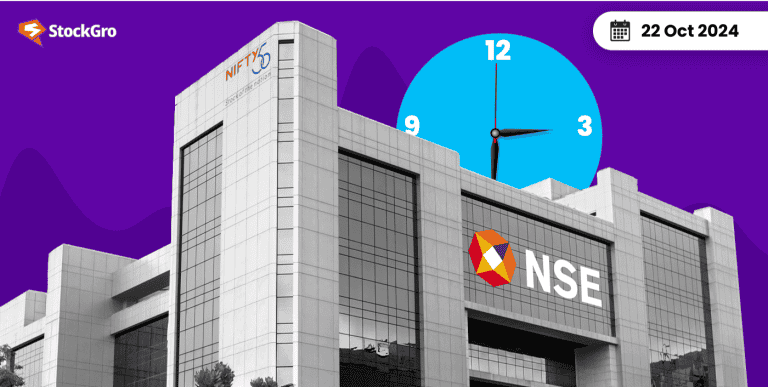
Mutual funds are one of the most popular instruments among Indians to generate long-term wealth. It offers a cluster of schemes, categorised based on their investments, that can suit the varied requirements of the investors. Solution-oriented funds are one such category, specifically designed to align with specific life goals of investors, such as retirement planning and children’s education.
Investors can access the facilities of systematic investment plan (SIP) or a lump-sum approach to align their financial planning with the help of mutual funds. Let’s explore this fund category and its suitability in detail.
Solution-oriented equity mutual funds in India
Solution-oriented funds provide strategic financial discipline, helping investors accumulate a targeted corpus. A prominent feature of this category is its lock-in period, which is designed to encourage long-term investments and avoid early withdrawals.
In India, people are familiar with the concept of lock-ins due to instruments like fixed deposits. This category may suit them as it can potentially discipline their savings and serve their specific purposes in the long-term. As of September 2024, the Average Asset Under Management (AAUM) of the solution-oriented funds has grown by nearly 39% to ₹53,427 crores in one year.
Types of solution-oriented funds
1. Retirement planning funds
These funds focus on building a retirement corpus based on the investor’s risk tolerance.
- Debt-oriented plans offer stability with lower risk.
- Equity-oriented plans provide higher growth potential over the long-term.
A 5-year lock-in period ensures stability, while systematic contributions offer a path to long-term financial security.
Also, read: Invest in the Best Retirement Funds for a Secure Future
2. Children’s gift funds
Designed to fund a child’s education, marriage, or other milestones, these funds aim for capital growth over time.
- Approved by Securities and Exchange Board of India- SEBI, these funds offer tax efficiency and help parents plan for future expenses.
- They also come with a mandatory 5-year lock-in period, ensuring focused savings.
Taxation of solution oriented funds
Solution-oriented funds may have exposure to instruments like equity, debt, or a hybrid mix. As per their concentration, the funds will be charged capital gain tax.
Taxation rules:
- Equity-based funds (65% or more equity):
- Short-term gains (STCG): 20%
- Long-term gains (LTCG): 12.5% (above ₹1.25 lakh)
- Debt-based funds (65% or more debt):
- Taxed at the income tax slab rate
- Other Funds:
- Short-term gains (STCG): Tax slab rate
- Long term gains (LTCG): 12.5%
Key benefits of solution-oriented mutual funds
- Long-term investments
These funds have compulsory lock-in for 5 years. Premature withdrawal may attract some additional cost. Therefore, it provides sufficient time for funds to unleash the compounding effect.
This type of funds have a mix of instruments which may help spread the concerned risks. Moreover, their long duration can help investors stay away from taking panic decisions during short-termed market volatility.
- Financial planning for future goals
The peculiar features of these funds can help investors accumulate corpus for key life events, such as retirement or higher education, through disciplined investments over time.
Planning investment strategy
Aligning investments with personal goals is critical. Investors must select a fund like retirement, children’s gift, or tax savings based on their individual objectives. Moreover, one should consider the following conditions accompanying these funds before making an investment decision.
Lock-in period and withdrawal rules
These funds generally come with a mandatory lock-in period to promote long-term investing.
- ELSS funds: 3-year lock-in (under Section 80C).
- Retirement and children’s funds: 5-year lock-in. During the lock-in period, early withdrawals are restricted.
- The Total Expense Ratio (TER) of these funds are as follows:
| AUM in ₹crores | TER other funds |
| 0-500 | 2.00% |
| 500-750 | 1,75% |
| 750-2,000 | 1.50% |
| 2,000-5,000 | 1.35% |
| 5,000-10,000 | 1.25% |
| 10,000-50,000 | Reduction of 0.05% in TER at every ₹5000 crore AUM |
| 50,000 and above | 0.8% |
Who should consider these funds?
These funds are can be considered for for:
- Beginner investors, seeking guidance and structure.
- Risk-averse investors, aiming for long-term financial goals.
- Individuals who prefer a hands-off investment approach while participating in equity or debt markets.
- If you are planning for significant future goals like retirement or funding your child’s education, solution-oriented funds offer a structured way to invest with clear outcomes. Regular SIP investments make it easier to accumulate the desired corpus, while lump-sum contributions provide flexibility to those with available funds.
An interesting read: Ajay Lakhotia reveals Nilesh Shah’s mutual fund success blueprint
Expected returns from solution-oriented funds
These funds may offer competitive returns. Investors should align their financial goals and select the suitable fund. Here are a few best solution funds in India with their performance metrics:
| Fund Name | 1-Year Return | 3-Year Return | Expense Ratio |
| Nippon India Retirement Fund Wealth Creation Scheme | 36.86% | 16.45% | 1.95% |
| SBI Magnum Children’s Benefit Fund | 43.65% | 22.60% | 1.20% |
| Franklin India Pension Fund | 18.42% | 9.26% | 2.28% |
Conclusion
Solution-oriented funds are an excellent tool for those looking to align investments with specific life goals. Whether planning for retirement, securing a child’s education, or reducing taxes, these funds offer structured, professional fund management with tax advantages. Their lock-in periods ensure disciplined saving, making them ideal for long-term investors.
Check this out! Mutual Fund vs PMS vs AIF: Key Differences
FAQs
- Should you choose solution-oriented mutual funds in India?
People who want to invest in these funds in the long term to cover financial expenses are welcome to invest in them as they provide high returns and protection against short-term fluctuations. However, the investor should maintain the monthly or lump-sum investments.
- What are solution-oriented mutual funds in India?
Solution-oriented mutual funds are the mutual fund category tailored for the specific financial goals of an investor, such as retirement planning, children’s marriage, or education. These funds have unique investment norms and conditions. However, they have a lock-in period of 5 years. Therefore, investors suitable to such conditions may opt for these funds.
- Are there any tax benefits associated with solution-oriented mutual funds?
Investment in solution-oriented mutual funds will surely have a tax benefit under certain conditions. A tax advisor would be the appropriate person and should be considered to advise and guide the investor in this matter. He will be able to help the investor understand the specific benefits that apply to the investment.
- How can I start investing in solution-oriented schemes?
To start investing in solution-oriented mutual funds, one needs to open a demat account with any brokerage firm. Once the account is set up, the person can choose the solution-oriented fund that aligns with their financial goals and start investing thereon.
- What risks are involved with investing in solution-oriented mutual funds?
Investing in solution-oriented mutual funds, like any financial endeavour, carries risks, mainly due to market fluctuations. These fund’s performance can change significantly depending on market conditions. While they present growth opportunities, it’s crucial to recognise that their value can increase or decrease, mirroring the overall economic environment. Grasping these dynamics can assist you in making more informed choices as you progress through your investment journey.

